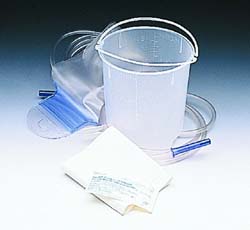

It includes holding the injection in the rectum for a short time to flush the colon thoroughly.
Tap water enema professional#
They are also used to clean the bowel before any test or surgery.Ī professional usually does the enema procedure, but you can also self-administer enemas at home. It can become a chronic problem for many people and requires treatment, such as enema.Įnemas can also treat fecal incontinence, a condition in which the stool leaks from the rectum unexpectedly. It also makes the stool hard and difficult to excrete. This procedure has been used for years to treat constipation and similar issues.Ĭonstipation is a severe condition that slows down the movement of your stool. Stay within close proximity of the toilet during this time.įor more information about enemas, visit our FAQ page, here.Enemas are injections of fluids used to cleanse or stimulate the emptying of your bowel. Again, do not force evacuation as these waves will occur naturally and normally without effort or strain. It may take 30 minutes or longer for all of the material to be evacuated as there will be typically several “waves” of peristalsis. Do not push out the water and stool as this will occur naturally through peristalsis. Try to continue lying on your left side for a few minutes until the urge to evacuate is strong at which time you will need to sit on the toilet and evacuate. Once all the water has been injected, close the flow control and remove the nozzle. The flow control needs to be adjusted so that it takes 2-5 minutes for all of the water to flow through. While lying on the floor or bath tub on your left side and on a towel, insert the nozzle into the rectum about 2-3 inches and open the flow control slowly to allow water to flow via gravity into the colon. Open the flow control and allow some water to flow into a toilet to remove air bubbles that may be in the hose. The tip of the nozzle is coated with a suitable lubricant such as KY or similar material. The container is filled with 4-8 cups of clean warm water at body temperature of approximately 100 F while the flow control is closed. The hose is attached to the bottom end of the container and the nozzle is at the outlet end of the hose.

The water container is positioned approximately 2 feet above your abdomen usually by hanging it on a shower curtain bar or hook. Here is a brief summary of the process however follow the manufacturer’s recommendations and follow the advice from your doctor or medical team. Successful users recommend silicon bags or stainless steel (bucket) materials be used and the nozzle be as soft as possible.

There are many kits and options available. The enema process starts with a kit comprised of a water container, typically a rubber bag or bucket, a hose with flow control and a nozzle. The frequency of enemas and combination with the other treatments are patient specific and can only be determined by trial/error and advice from you doctor or health professional. More typically, enemas are often used in combination with the other management tools noted in this guide. However, because LARS is not the same for everyone, enemas do not work for everyone and has shortcomings as described below. When this process is performed properly, stool is typically removed without straining and excessive stress or pain. All these methods basically deliver warm water into the colon and this stimulates peristalsis which then causes the water and stool in the lower colon to be pushed out of your body.

There are several means of administering an enema but we will describe the most common method here as well as provide additional information of other methods that you can review. Use this guide as a learning tool and read as much medical literature as possible in order to raise your level of understanding. In this case, be prepared to have an open discussion with your doctor by learning all that you can about how enemas work, what the risks and benefits are, and most importantly, communicate clearly your specific symptoms and the effect these are having on your quality of life. This is particularly important if you are considering enemas within the first 6 months after surgery the colon is still recovering from inactivity and your anastomosis may not be fully healed.Īlso be aware that many doctors are not specifically experienced with the option of using enemas for LARS as LARS itself is not fully understood by the medical community at large. Your doctor is the only professional that understands your specific health condition and status and can therefore advise if enemas, which require the insertion of a plastic nozzle into the rectum, is a safe and viable option for you. The first important step for people considering enemas as a means to manage LARS symptoms is to consult your doctors and seek their advice and recommendations.


 0 kommentar(er)
0 kommentar(er)
